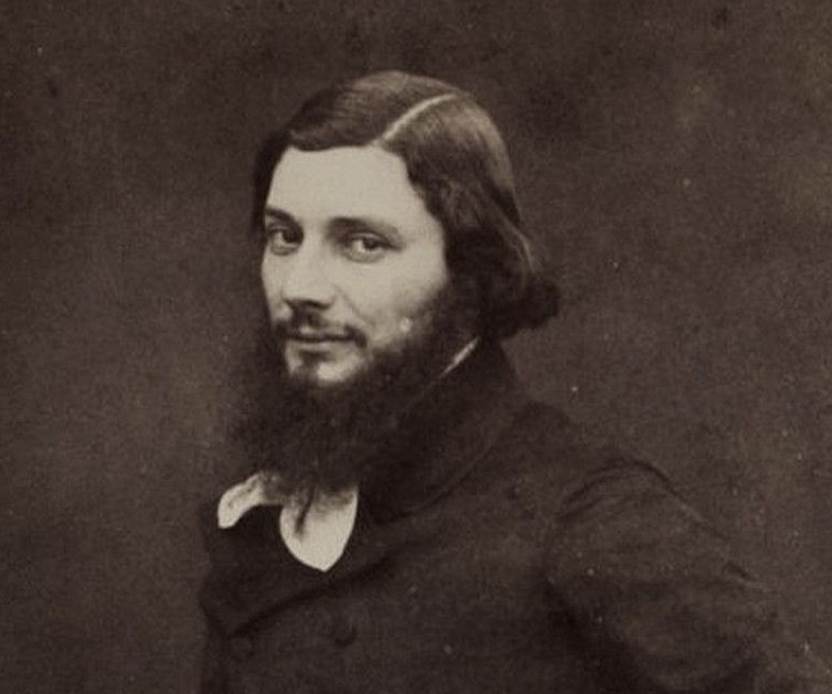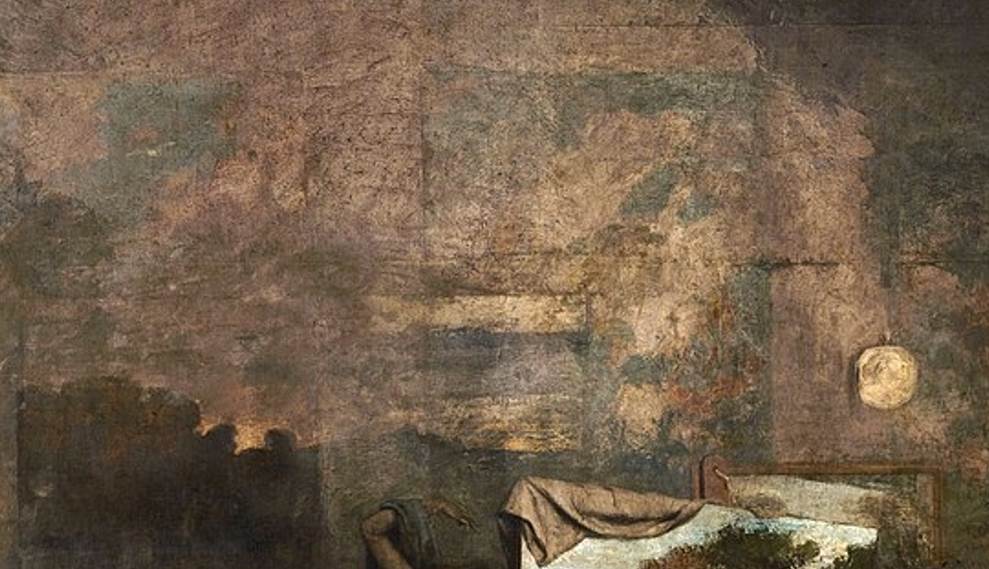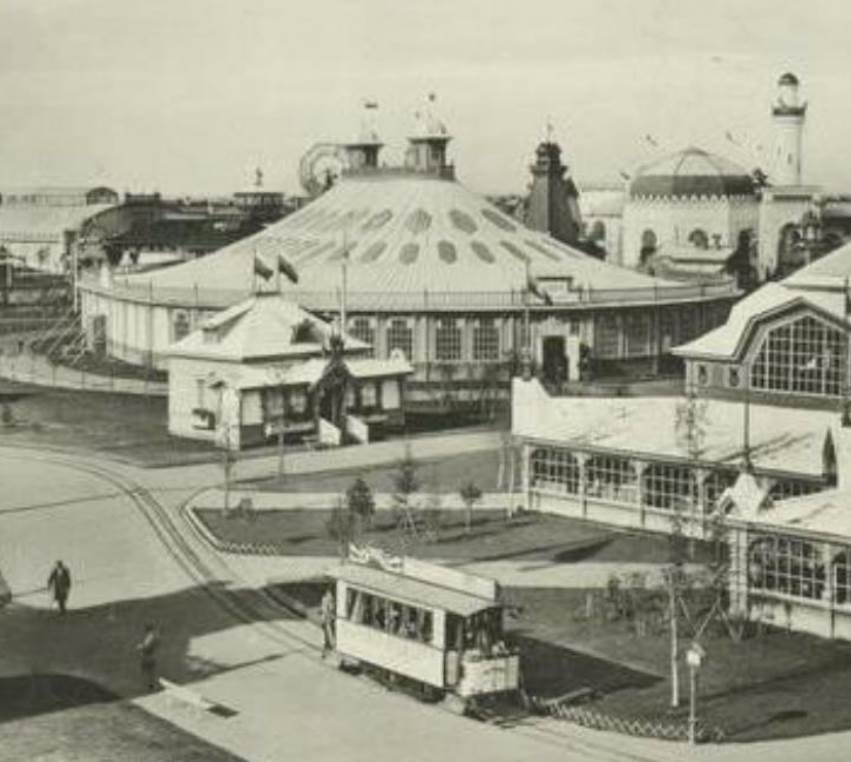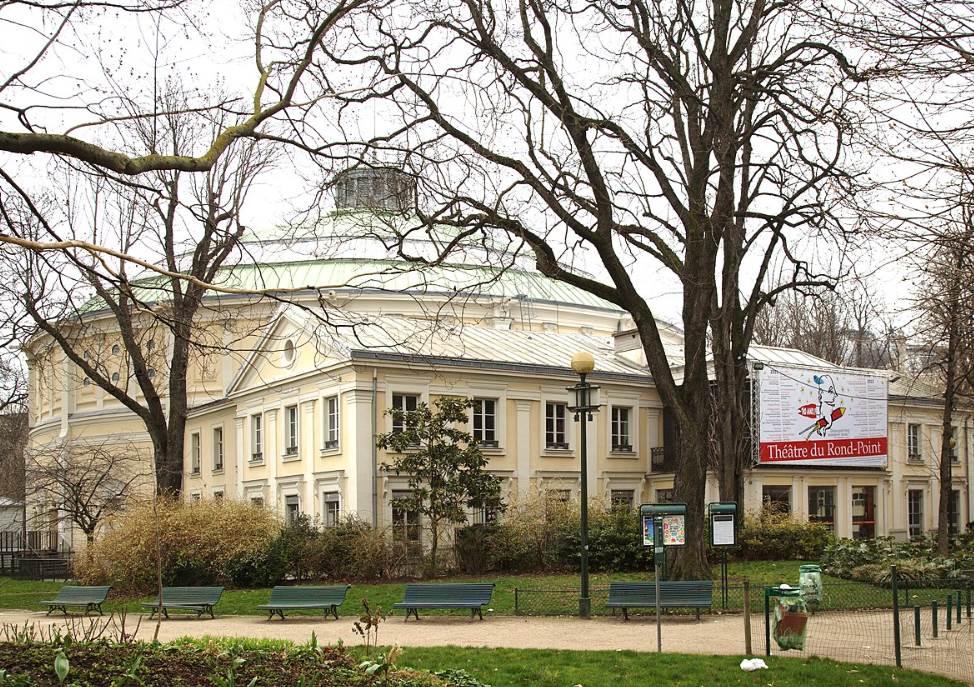When a monumental painting by Gustave Courbet (1819-1877) was rejected for a very important event in Paris in the year 1855, he rebelled against the jurors who denied it.
This would mark a great moment in the history of art, although it didn’t do him much good at the time.
Today, this masterpiece by Courbet, the founding father of the Realism artists of the mid-19th century, is considered to be one of the most important Realism paintings ever created.
Let’s take a closer look at some of the most interesting facts about The Artist’s Studio by Gustave Courbet, a significant work of art for several reasons.
1. The painting was completed at the height of the Realism art movement
Gustave Courbet was a French artist who was initially inspired by the 19th-century Romantic artists in France, especially the paintings of Eugène Delacroix (1798-1863).
He rejected both the overly dramatic elements of Romanticism by only painting what he could observe.
He also denounced academic values by portraying common people and laborers in monumental works of art, something only reserved for mythological and historical subjects at the time.
His first major works that were accepted for the Paris Salon in the early 1850s were “The Stone Breakers,” “The Peasants of Flagey,” and “A Burial at Ornans.” These embody his artistic style.
The Artist’s Studio is also known as “The Painter’s Studio” and was completed between 1854 and 1855.

2. The original title explains what the painting is about
The short title with which the painting was described was “L’Atelier du Peintre,” but Gustave Courbet gave it a title that describes the work in great detail.
He referred to it as “The Painter’s Studio: A real allegory summing up seven years of my artistic and moral life.”
Courbet’s idea behind the painting was the produce a summary of the 7 years that he has been active as a painter. He mentioned that “The world comes to be painted at my studio” and therefore included a large number of figures.
On the left, we can see people from all walks of life. The artist is seated in the center while painting a landscape and a nude female model stands right behind him. This can be interpreted as a reference to academic art.
On the right, we can see several elites and influential figures in Paris in the 19th century.

3. Multiple figures on the right have been positively identified
While the lefthand side features a mix of people from all levels of society, including a Jewish man and an Irish woman, the people on the right were mostly people who Courbet knew.
Some of the most notable people who have been identified are:
- Pierre-Joseph Proudhon – A French socialist and philosopher.
- Charles Baudelaire – A French poet and art critic.
- Champfleury – An art critic and novelist who was a fervent supporter of the Realist art movement.
- Alfred Bruyas – A patron of the arts and Courbet’s most important patron.

4. The artist didn’t manage to complete the painting as he intended
Courbet started working on the painting in 1854 along with several other paintings. He wanted to submit all of them to the jury of 1855 Paris World.
This left him with very little time to complete each work and he had to cut back on his initial idea for the work.
This is best reflected in the empty wall behind the artist which was supposed to feature paintings he had already completed up to that point.
Because he didn’t have enough time, he shelved this idea and overpainted the painting that hung on the wall with a brownish preparation color.
Some of the paintings that he started working on are still partially visible.

5. The painting was rejected for the 1855 Paris World Fair
The Champs-Élysées was the venue of the 1855 Exposition Universelle. You’ll hardly find a better place to organize a World Fair, and this meant that every artist wanted to be featured here.
This included Gustave Courbet who submitted numerous paintings of which 11 were approved to be exhibited at the event.
One of the most remarkable facts about The Artist’s Studio by Gustave Courbet is that his monumental masterpiece wasn’t selected, something that the artist couldn’t appreciate too much.
In an act of defiance and protest, he managed to convince his main patron, Alfred Bruyas, to set up a pavilion right next to the main exhibition.
They referred to it as the “Pavilion du Realisme.” This exhibition eventually formed the source of inspiration for the “Salon des Refusés,” an exhibition for paintings that were rejected by the Paris Salon.
Courbet’s Realism Pavilion received a lukewarm response to put it euphemistically. Remarkably, Romantic master Eugène Delacroix was one of the few who appreciated this exhibition.

6. The painting was intended to be an allegory of society in general
Even though the title of the painting implies that the depicted people are allegorical representations of Courbet’s artistic career, it had a deeper meaning for him.
He even went as far as referring to this huge work of art as:
The Artist’s Studio represents society at its best, its worst, and its average.
It’s fair to conclude that this deeper meaning behind the work was a sign of the importance that Courbet gave to it.
Perhaps that was one of the main reasons why he was so angry when it was rejected by the jury of the 1855 Paris World Fair.
Fun fact about this event: A theater called “Le théatre du Rond-Point à Paris” is the sole building that still stands in the city today.

7. How big is The Artist’s Studio by Gustave Courbet?
One of the main reasons why Courbet didn’t have enough time to include the paintings don’t the wall is because this work is huge.
The Artist’s Studio by Gustave Courbet is an oil on canvas painting that has dimensions of 361 × 598 centimeters (142 x 235 inches).
8. Where is the painting located today?
Gustave Courbet passed away in the year 1877 and the painting was in the possession of the artist’s sisterJuliette Courbet until 1881.
The painting changed hands several times until it was acquired by the Louvre Museum in Paris in the year 1920.
It was part of the collection of the Louvre until 1986, the year it became part of the collection of the Musée d’Orsay.
The former train station that was transformed into an amazing art museum is where you can admire Gustave Courbet’s work today.



